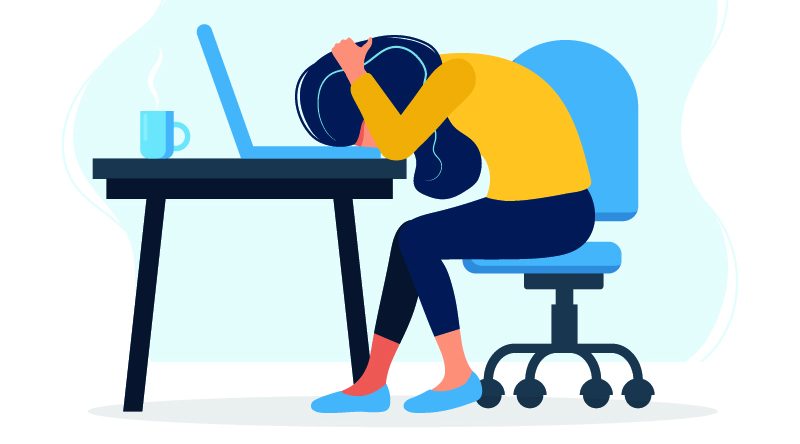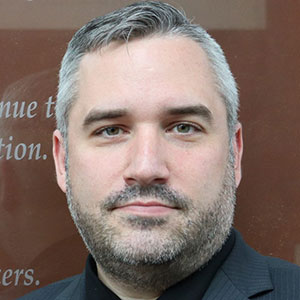
Leveraging the hierarchy of controls for psychosocial hazards
By Bill Howatt and Troy Winters

(Biscotto87/Adobe Stock)
The hierarchy of controls is a fundamental concept in any health and safety program. Many legislative jurisdictions in Canada require employers to consider the hierarchy when determining how to meet the general duty clause of providing a healthy and safe workplace.
However, applying health and safety practices has generally outpaced regulations and guidance from regulators. Many OHS and HR professionals are confused about using the hierarchy, initially developed for physical hazards, to the new expectation of protecting workers from psychosocial hazards that can harm their mental health.
Hierarchy of controls
The hierarchy of controls describes a process or guide employers should consider when responding to work-related hazards. The goal is to apply the controls that provide the most significant level of protection first rather than jumping to less effective (and often less costly) control measures.
- Once a hazard has been identified as a workplace issue, the hierarchy guides an organization to explore ways to remove it. Removing a hazard means that a worker cannot be hurt by it. When the hazard cannot be removed, it must be controlled so that workers will not be exposed and injured.
Controls options
- Engineering control means reducing exposure to the hazard by modifying the workplace’s physical structure, equipment, or processes. Physical barriers and guards are often used. Engineering controls are passive, where no action by workers is required. A worker must circumvent a control to be exposed to the hazard.
- Administrative controls limit workers’ exposures by controlling work (i.e., rules and policies).
- Individuals wear personal protective equipment to reduce their exposure to the hazard or risk of harm.
Application to psychosocial hazards
How can the hierarchy of controls be applied to psychosocial hazards? Or how can leaders mitigate their teams’ risk of exposure to psychosocial hazards that can result in mental harm or injury?
ISO 45003 suggests that psychosocial hazards fall into three broad categories: a) work organization, b) social or interpersonal factors, and c) the physical work environment. These psychosocial hazards can cause harm by creating unhealthy stress (e.g., frequency, duration, and intensity). If left uncontrolled, they can negatively impact workers’ mental health outlook (e.g., languishing) and create mental harm, injuries, and illness (e.g., burnout).
For employers and leaders to leverage the hierarchy of controls for psychosocial hazards, they must recognize the sources of the most dominant workplace psychosocial hazards, followed by their root causes, interactions, and impact on workers. Some may argue that psychosocial hazards cannot be eliminated because there will always be interactions with other people for organizations to operate.
Once identified, the negative impact of psychosocial hazards on workers’ mental health can be mitigated or removed to protect workers from mental harm. Physical hazards (e.g., chemical) are not likely to walk back into a workplace once removed, but employers must still remain vigilant. The same is true for psychosocial hazards (e.g., workload) that once removed can more easily return to the workplace and potentially harm workers.
So just like physical hazards employers must set expectations for a Plan-Do-Check-Act (PDCA) approach of continual improvement to identify and remove psychosocial hazards that could negatively impact workers’ mental health. Leaders should ask affected workers the following questions:
- Can this hazard be eliminated? Many workplace psychosocial hazards can be eliminated (or mostly eliminated). This is especially true of organizational and physical hazards such as excessive workload, hours of work, and poor workplace conditions like improper lighting and excessive noise.
- Can we physically separate workers from the hazard? Though more commonly thought of as a control for physical hazards, the potential for physical hazards such as violence can be greatly reduced by facilitating workplace violence audits and controls like lone worker protection plans, lighting, security barriers, and escorting employees to parking lots at night).
- Would a rule or change to procedures reduce the risk? The risk of many psychosocial hazards can be reduced by developing regulations or guidelines for how work is performed. These include scheduling, staffing, policies, safe work procedures, and working-alone restrictions.
- Is personal protective equipment (PPE) required? PPE is usually the least desirable form of control for a and hazard since it doesn’t reduce the hazard in the workplace, but should not be discounted. Supporting workers mental health and building up their personal psychological protection (PPP) is can help employees develop resiliency and coping skills to protect their mental health from periods of stress in the workplace.
Though the hierarchy classification process can focus conversations on determining effective controls, there could be disagreement over how a control would be classified. We advise against getting hung up on classifying every control. A control’s category is less relevant than whether it makes a workplace safer, so adopting a PDCA approach is critical for facilitating a psychologically safe workplace.
When managing psychosocial hazards, leaders must remember that every worker’s mental health is variable. Some employees may be more sensitive to psychosocial hazards because of their mental state (e.g., experiencing mental illness). This may result in a need to provide access to mental health support to help them cope with reasonable work-related stress. Ensure leaders are trained in Duty to Inquire, and help workers build their PPP.

Dr. Bill Howatt is the Ottawa-based president of Howatt HR Consulting.

Troy Winters is a senior health and safety officer at the Canadian Union of Public Employees (CUPE) in Ottawa.